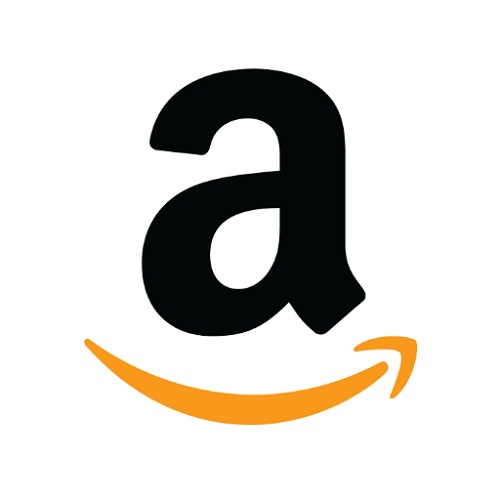How We Started A 4.8M E-Commerce Skincare Company
Hello! Who are you and what business did you start?
Hello, my name is Michael Koh and I am the founder of Tree To Tub. We are a natural skincare company that takes care of people with sensitive skin. Our signature products are shampoo, body wash, facial cleanser made from the Soapberry.

The Soapberry is a miraculous fruit that suds up the gentlest lather when you give it a rub (it’s crazy I know!). Its naturally antibacterial and anti-inflammatory lather is the best nature has to offer to declicate skin types (eczema, psoriasis, and other dermatological issues).

We’re happy that we’re solving a painful problem (literally sometimes) for people, and that has got us to $3M on our 3rd year.
What's your backstory and how did you come up with the idea?
When I was a baby in Taiwan, I had horrible sensitive skin. Bathtime was pretty much a nightmare and the harsh chemical soaps would give me a rash every time.
Out of desperation, one day my grandma collected some Soapberries in the mountains. These Soapberries would lather up with a rub, and were used as soap by the indigenous people for thousands of years before the cheaper, more convenient, synthetic soaps became popular.
We were all surprised, the suds from these fruits didn’t sting my skin at all! I was finally able to end the bathtime nightmare, and shower like a normal kid.

When I immigrated to the U.S. as a highschooler, I was surprised that no one knew about the Soapberries, and people with sensitive skin had only these chemical-based pharmaceutical products to choose from.
They are not that gentle, smell bad, and the worst part is that their branding makes you feel like a weird, undesirable patient with skin diseases. As I gained more experience in the startup world later on, it became very obvious to me that with the Soapberry and strong branding, we could help many people feel good.
Before starting Tree To Tub, I had already built two other companies. I started a food truck business when I was studying at UC Berkeley, and that experience taught me a very important lesson:
Find a partner
Even though it was just a small food truck business, the amount of stress really pushed me to the edge sometimes. It’s always better to share both the challenges and success!

My experience with an on-demand peer to peer tutoring app startup afterwards gave me another important lesson:
Build a healthy cash flow business
A good business should make good money. However, that’s not the case in Silicon Valley where it’s all about fluffy valuations and being the “unicorn”. That just didn’t make sense to me. Cash is king!
Although I had no experience in E-Commerce, I believe the prior entrepreneurial experiences gave me lots of valuable lessons and most importantly, the confidence and grit we needed for this business.
Take us through the process of designing, prototyping, and manufacturing your first product.
By the time I stole my college best friend Brian from the corporate world, I had already ran out of savings from traveling. I invested my last $10,000, he put in a little more, and we were ready to go!
Know the what, why, who, where, how about your customers. You need to toss away whatever assumptions you have about your products and customers.
Since we both had no experience in skincare manufacturing, we naively thought we could just extract the Soapberries, put the juice in a bottle, and WALLAH, that’d be our product. After 2 weeks of boiling Soapberries in our tiny kitchen, we learned that this was certainly not the way to go if we wanted to build a real business. We had to talk to someone who knows how this industry works!

We soon gathered a shortlist of potential advisors in the industry and reached out to them through our connections or directly on Linkedin. Some actually got on a call with us! (One of the phone call was with Ric from 100% Pure, and he later on played a very important role in our business as both an advisor and an investor.) We soon learned the big picture of this business, and the fact that we need a legitimate manufacturer to formulate for us and scale with us.
Naturally, we started reaching out to the biggest Soapberry farmer collective and manufacturer in Taiwan to strike a manufacturing deal. We were able to convince them to run some sample rounds with us at a low cost.

Our vision of Soapberry juice in a bottle never changed, and it was not an easy concept to communicate with any skincare manufacturer. The industry is used to relying on things like artificial fragrance, parabens, silicone, and harsh foaming agents, and we sure didn’t want any of that.
It was important for us personally to not become those green washed “natural” brands in the market. However, that also translates to higher costs and lower margins. For example, instead of artificial fragrance, we use natural essential oils, and that’s a 5X difference in terms of cost.
Because of our higher costs, we knew that we had to go for the premium market, and that certainly influenced our branding and design. We knew the packaging needs to be elegant, and it needs to be able to tell the story of the Soapberry. We even included a small drawstring bag of Soapberries in our packages, just so people can experience it in its rawest form!

Describe the process of launching the business.
We soon realized the $20,000 we invested into the company wasn’t going to be enough to cover the MOQ and all the marketing expenses we’d need to get our products into the market. Not wanting to take on any investments at this stage, we decided to launch a Kickstarter campaign as a presale.
Again, we were new to crowdfunding, so we approached our friends, friends of friends, and basically anyone who’s had done a Kickstarter before to pick their brains. We took notes, followed their strategies, and worked our ass off for 2 months before we finally launched it.
The result? A modest yet satisfying $40,000 campaign. I would contribute all the success to our friends and family. And no, this is not one of those cliche speeches people give after they win awards. I mean it.
We tried stuff like social media and PR, and honestly they ended up being a waste of our time. Unfortunately, at this point, we had very little expertise in online marketing, so we weren’t comfortable with the popular strategy of list building through FB ads.
However, we have many, many friends. Brian and I are both the type to make friends wherever we go, and over the years, we’ve really built a network of people who care about us. That was our golden list. Before the launch, we consistently posted on our FB to keep everyone warmed up, then we private messaged all of them (thousands) via email or chat to get them to back the campaign on the first day.
As a result, our friends helped us hit $10,000 in the first 15 hours, which triggered the Kickstarter algorithm to promote our project and eventually filled up rest of the $40,000.

That $40,000 was extremely crucial for us to get things started because soon we’ll learn that everything costs money, especially when you’re just figuring out your marketing.
Since launch, what has worked to attract and retain customers?
Oh gosh, we spent lots of money and tried many things like FB ads, influencer marketing, SEO, and etc. They just didn’t seem to work.
Six months after our Kickstarter, we almost burned all our cash, and we started having the thought of packing our bags…
However, one of our advisors and friends encouraged us to focus on Product Market Fit. He was convinced that we had awesome products, but just hadn’t found the right customers for them.
So we started emailing surveys and calling up our customers, literally chatting with each of them for almost an hour over the phone to get a deeper sense of…
- Why are you buying from us?
- Who are you?
- What do you like/dislike about us?
- How should we best approach people like you?
- Where should we approach you?
And like all startup stories, we totally misjudged our customers. We were focusing too heavily on “natural/organic” when our true strength was actually “gentle/good for sensitive skin”. With that observation, we completely revamped our marketing language to speak to people with sensitive skin, eczema, psoriasis, or other skin conditions.
We also realized that most of them prefer to shop on Amazon, and that convinced us to move our battleground away from Shopify...
Amazon saved our business. We’re great at products and branding, however, we were horrible at the most important element - traffic. Amazon solves that problem. All we had to do was to study the platform, and tell a really good story there. With the right setup, we started to see sales volume we had never seen within just 2 months on Amazon. We knew we survived.
How are you doing today and what does the future look like?
We are doing great today - $4 million revenue and profitable, 40% on Amazon, 40% with online retailers, and 10% on our own Shopify store.

Comparing to other brands in the industry, we have a much higher cost of goods, but we are also able to charge a premium with higher quality products. Was this a smart move? We don’t know, but we certainly feel good about our ingredients.
We spend most of our advertising dollars on Amazon PPC, and sometimes we’re very aggressive with it. It’s worth it when your listings have high conversion (~30%), and when you know customers will fall in love with your products and brand (high retention, high cross-sell, high LTV).
For example, a friend once told me “I want to open a restaurant”. I asked him why. He said “I love cooking!” Is opening a restaurant a smart move for someone that loves cooking? Hell no!
Our team currently has 5 people. The coolest thing is that we all work remotely. The 2 founders live in Thailand and take care of product development, manufacturing, branding, and finance. Our CMO lives in Bali, and he takes care of all the marketing and product launching on Amazon. We have 2 employees from the Philippines that help with operations and customer support. Overall we have a very lean and efficient team, and we all very happily enjoy the freedom of location independence.
By 2020, we plan to grow to $10M mainly by expanding our products lines, launching in different international Amazon marketplaces, and potentially investing serious effort into our Shopify channel.
Through starting the business, have you learned anything particularly helpful or advantageous?
Oh man...I can talk all day about this. But here are a few:
Product Market Fit
Know the what, why, who, where, how about your customers. You need to toss away whatever assumptions you have about your products and customers.
Do solid research from the beginning, and continue to improve it so you don’t end up wasting time and resources like us.
There’re lots of good reads out there like Paul Graham’s essays.
Don’t Do Everything
Know your strength and weakness. Fortunately, we realized that we’re just not that good at generating traffic, so we made a major move from Shopify to Amazon and other online retailers.
Make Amazon do the work, so we can focus on what we’re good at, branding and product development.
Do few things well, and outsource the rest as much as you can.
Set Clear Personal Goals
What do you want out of this business? Strike a home-run and retire? Build a chill lifestyle business that brings in passive income? How many hours do you want to spend a week on the business? Do you care about location independence? How many years do you want to invest into this?
You need to set a quantifiable goal so you know where to go, how to grow, and when to stop. Don’t work for your business, make it work for YOU.
At the end of the day, your business is here to help you reach your higher goals in life.
What platform/tools do you use for your business?
- Communication: Slack
- Task Management: Teamwork
- SOPs: Loom
- Access Management: LastPass
- Sales Platform: Shopify
- Email Marketing: Klaviyo
- Email Capture: Spin-a-Sale
- Fulfillment: Shipping Eazy
- Customer Service: ReAmaze
- Sales Platform: Amazon
- Autoresponders: FeedbackWhiz
- Keyword Research: Helium10
- Facebook Chat Funnels: ManyChat
- MISC: ZonPages
- Notifications: SentryKit
What have been the most influential books, podcasts, or other resources?
Books
Profit First: If you goal is to make a business that makes money, instead of burning money like most Silicon Valley startups, then this is a must read.
This book will teach you how to make money work for you.
Other Resources
Advisors: Any entrepreneur should have a shortlist of advisors they can learn from. In the past 3 years, we’ve probably spoke to no less than 100 different advisors about different matters.
You only know what you know, and you don’t know what you don’t know. Put your ego aside, shamelessly reach out, and kindly give back whenever you can.
Clarity.fm is a great way to start if you don’t have a strong network already.
Advice for other entrepreneurs who want to get started or are just starting out?
Know the “why”. Starting a business is so risky that it’s basically irrational, and we’re not just talking about just the obvious financial risks. It’s time, health, relationships, and all the beautiful things in life.
Why are you starting this business, or any business? If you don’t have a clear answer, then maybe you should think again. Entrepreneurship is just a means, it’s not a goal. You need to understand your goals, and ask yourself “is starting a business the best way to reach my goal?”
For example, a friend once told me “I want to open a restaurant”. I asked him why. He said “I love cooking!” Is opening a restaurant a smart move for someone that loves cooking? Hell no! Successful restaurant owners don’t get to cook much because they need to manage employees, operations, supplies, accounting, marketing, and all the other boring stuff. If he really wants to cook, he has many other options, ex: becoming a chef, cooking for friends, becoming a chef influencer, etc. He absolutely does not need to start a restaurant (and I’m glad I talked him out of it).
If after some serious thinking, you still decide to start a business, I highly recommend you to set clear, quantifiable goals as mentioned in an earlier section. It’ll help you obtain clarity down the line, and help you make sure you’re doing it for the right reason.
Are you looking to hire for certain positions right now?
We’re not looking to fill any specific position right now, but we’re always open to chat with A+ talents and professionals. If you believe you can help us get to another level, please reach out and tell us more about it!
Where can we go to learn more?
If you have any questions or comments, drop a comment below!

Download the report and join our email newsletter packed with business ideas and money-making opportunities, backed by real-life case studies.

Download the report and join our email newsletter packed with business ideas and money-making opportunities, backed by real-life case studies.

Download the report and join our email newsletter packed with business ideas and money-making opportunities, backed by real-life case studies.

Download the report and join our email newsletter packed with business ideas and money-making opportunities, backed by real-life case studies.

Download the report and join our email newsletter packed with business ideas and money-making opportunities, backed by real-life case studies.

Download the report and join our email newsletter packed with business ideas and money-making opportunities, backed by real-life case studies.

Download the report and join our email newsletter packed with business ideas and money-making opportunities, backed by real-life case studies.

Download the report and join our email newsletter packed with business ideas and money-making opportunities, backed by real-life case studies.


















